The Best Jewish Children’s Books of 2015
Stories about dogs and cats and even Santa Claus make the perfect Hanukkah gift this year
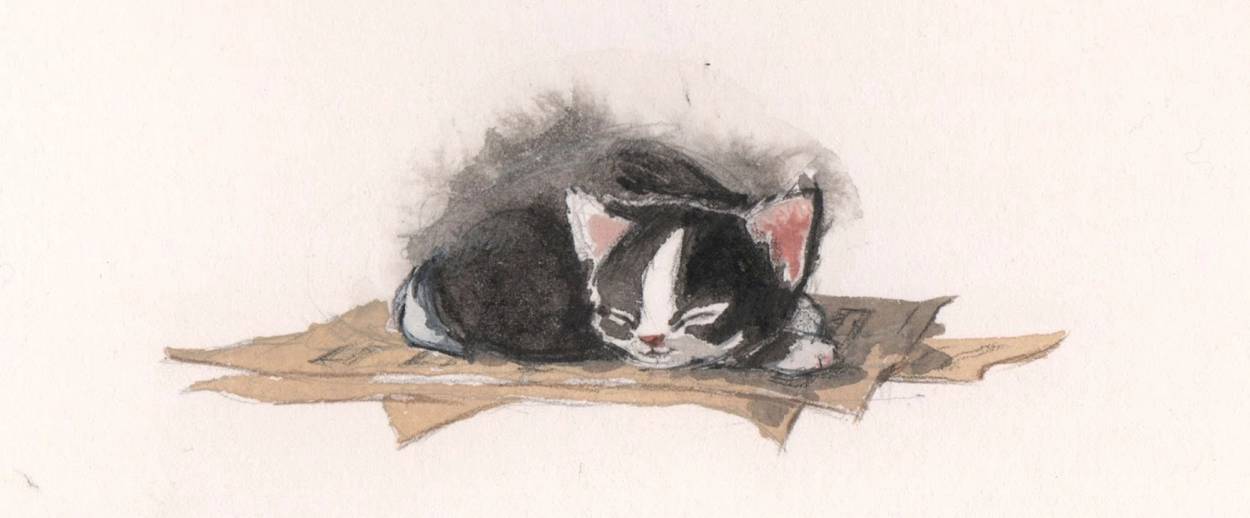
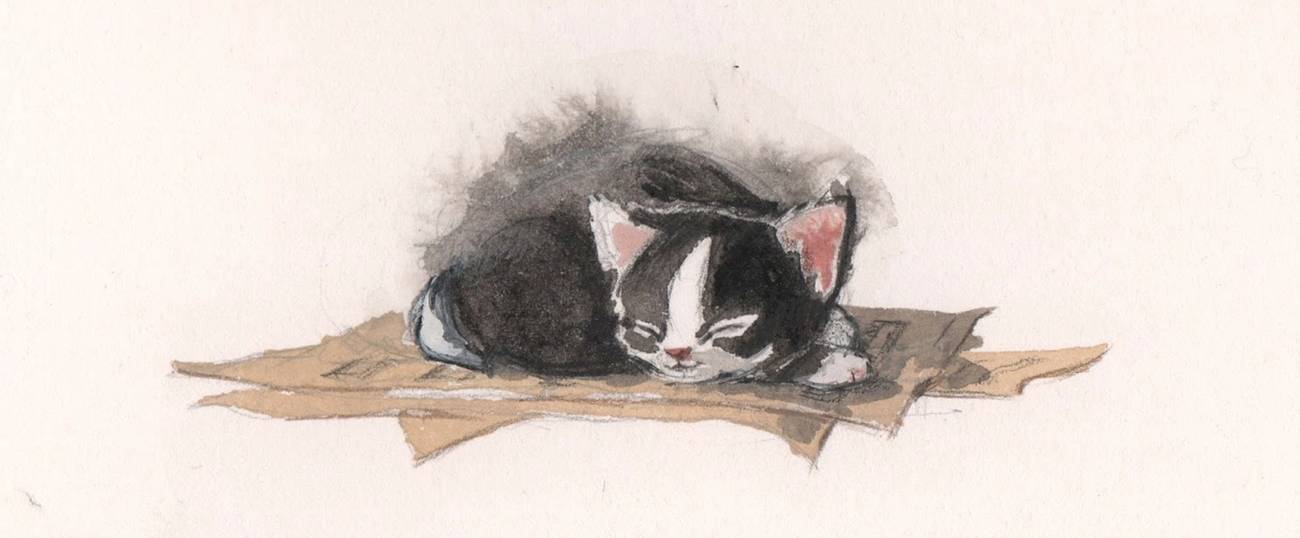


It’s tough to find the perfect Jewish gift to give your kids for Hanukkah. Apparently, even chocolate Maccabees aren’t safe from pernicious pagan/Christian influence. The only unassailable gifting bet is some lovely Jewy literature. And if you have little kids in your life, so much the better, because it was a banner year for Jewish picture books! (Alas, it was meh for young adult fiction. But nu, life is often a shiny foil Maccabee filled with sadness.)
PICTURE BOOKS
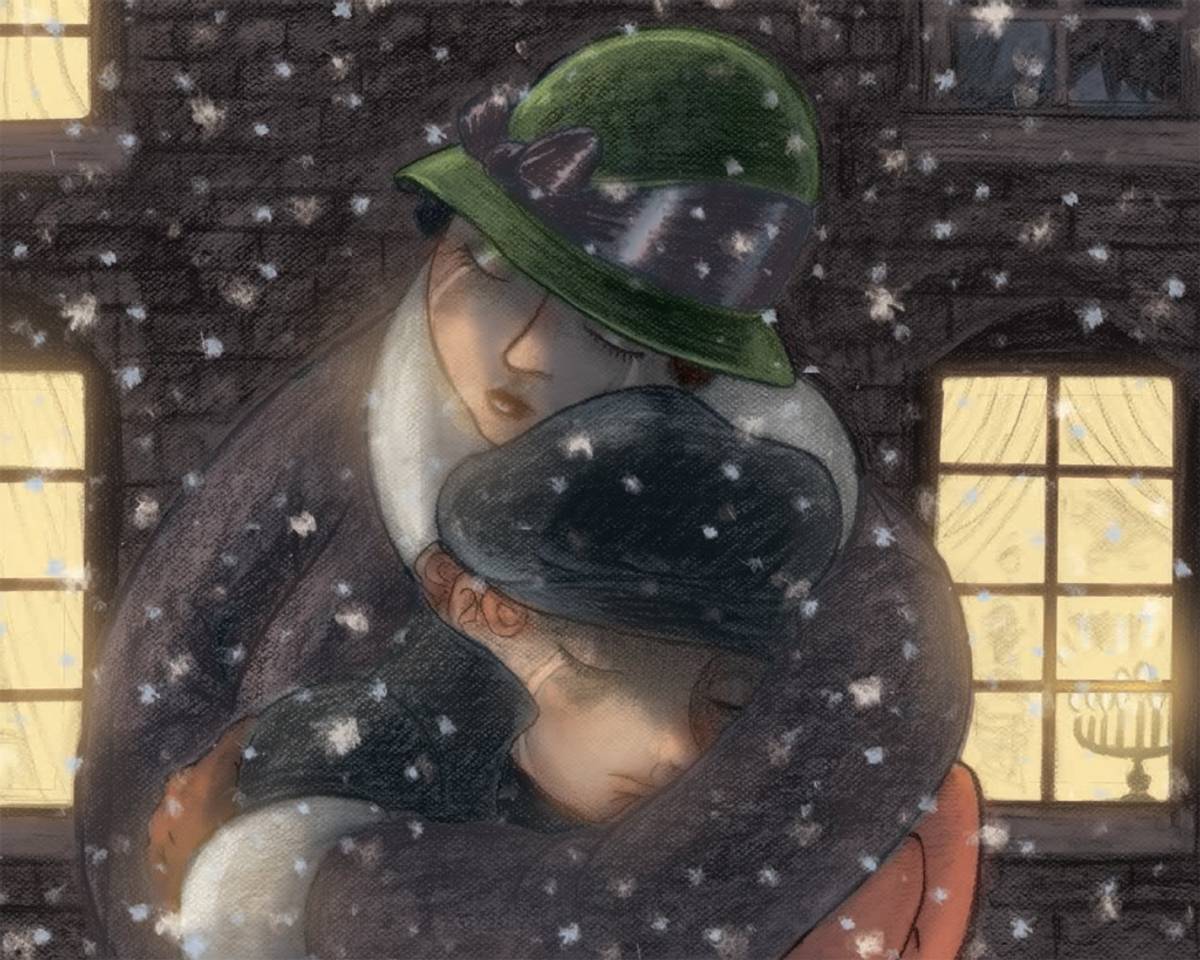
You couldn’t ask for a lovelier Hanukkah tale than Oskar and the Eight Blessings, by Richard Simon and Tanya Simon, illustrated by Mark Siegel. A little boy arrives on a ship to New York City on the seventh night of Hanukkah—which also happens to be Christmas Eve—in 1938. He’s survived Kristallnacht and been sent to find his aunt on 103rd Street and Broadway. His father has told him, “Even in bad times, people can be good. You have to look for the blessings.” So, Oskar begins trudging uptown from the Battery; along the way, he encounters eight acts of kindness. Through soft, warm-toned panels of illustration shot through with bursts of color, we accompany Oskar as he meets different helpers: A lady feeding pigeons near Trinity Church gives him a small loaf of bread. A newsstand guy in Union Square sees him admiring a Superman comic and lets him keep it, even though he has no money. A jazz musician near Carnegie Hall engages him in a duet of whistling as bright primary-colored notes swirl around them. (“It was Oskar’s first conversation in America,” the text notes.) Finally, he makes it to his aunt’s home, and she envelops him in a warm hug. An afterword gives us some historical backstory, and a map lets you follow Oskar’s journey. It’s a gorgeous, heartwarming book, especially at a time when it seems we need all the helpers we can get. (Age 4-10 and adults, too.)
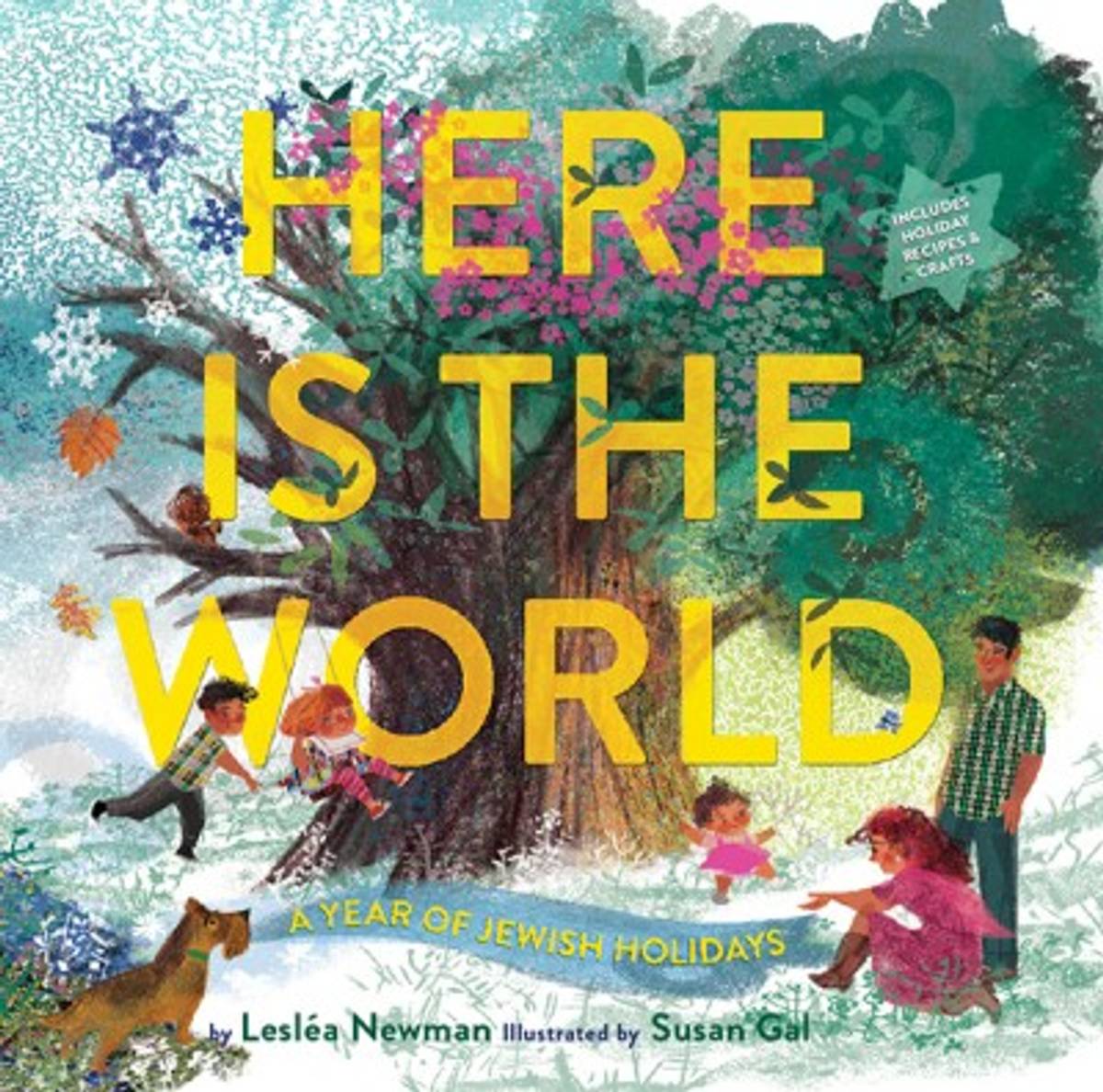
On a frothier note, Here Is the World, by Lesléa Newman, illustrated by Susan Gal, is a beautiful, bright, riotously colorful trip through the Jewish calendar. It’s a substantial square of art that may actually be better than chocolate. (It’s definitely better than most Hanukkah chocolate.) Each holiday is introduced with a rhyming couplet (“Here is the sukkah, its roof made of twigs. Here are some grapes, pomegranates, and figs”) and accompanied by digitally manipulated and collaged charcoal illustrations. There are lots of people celebrating, lots of color and action and joy. The back matter gives more detail about each holiday, along with crafts and recipes for each. (Yes, there is yet another farshtunkiner edible sukkah involving graham crackers that I assure you will not stay vertical and will cause temper tantrums, but there’s also a more achievable challah cover, a break-the-fast kugel recipe, a milk-and-honey Shavuot milkshake, and a very cute edible Torah for Simchat Torah made of a tortilla, almond butter, chocolate sprinkles, and pretzel rods for rollers.) (Age 3-7.)
Ketzel, the Cat Who Composed, by Lesléa Newman, illustrated by Amy June Bates, is a surefire hit for the cat-lover on your list. This is another beautiful-looking, sturdy book with enchanting pictures. It’s the (mostly) true tale of Moshe Cotel, a composer who found a homeless kitten. In the book, he tells her, “Come on, little Ketzel. I will take you home and we will make beautiful music together.” And they do! Moshe is suffering from writer’s block, so when Ketzel prances across the keyboard and creates a perfect little composition, Moshe enters it into a contest, crediting it to “Ketzel Cotel” but failing to mention that Ketzel is a cat. She wins an honorable mention and gets smuggled into a performance, where she meows loudly upon hearing her name announced from the stage. She also gets a royalty check for $19.72, which Moshe uses to buy cat food. The story is somewhat fictionalized, but Newman’s afterword explains the liberties she’s taken (you can read the full and true story here). The watercolor, gouache, and pencil drawings are adorable without being cloying. My favorite depicts Moshe from the back, ferociously pounding the keys (which are drawn in kinetic quadruplicate to show volume and vibration) as Ketzel leaps into the air with a puffed-out tail, fur standing vertical in alarm, a comic look of feline alarm on her kitty face. Newman’s tone here is very different from the bouncy poetry of Here Is the World (two books on the list, rock star!); the simple, straightforward voice lets the action and love in the narrative shine. The afterword notes that Moshe became a rabbi late in life and talked about how Ketzel taught him kavannah, intention, and concentration. “We are surrounded by miracles if you can only perceive them,” he said. (Age 3-8.)
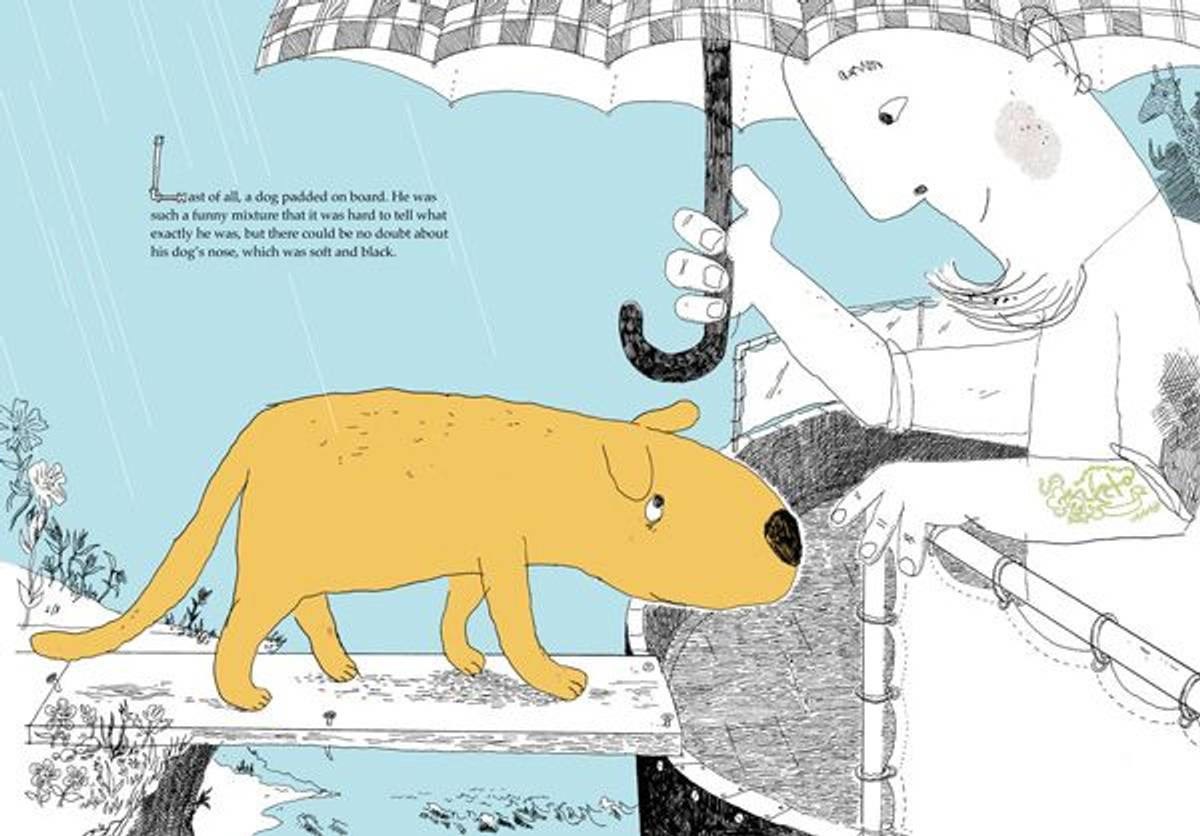
Dog lovers deserve equal time. Why Dogs Have Wet Noses, by Kenneth Steven, illustrated by Øyvind Torseter, is a retelling of Noah’s Ark as a pourquoi tale. You’ll want to read this with your kid, because it takes major liberties with the biblical version and offers a lot of conversational fodder. Noah loads up the ark, per usual, with two of everything but also lets in a dorky-looking solo dog with a big nose. “They sailed away,” the text says. “Land had long since vanished. Only sea and sky remained. The rain fell heavier and heavier, and lightning shot from the black clouds, gleaming like snakes’ tongues. But apart from the crashing sounds of rain and thunder, it was completely quiet. As though there were no other sounds left in the whole wide world.” And the art—I think it’s pen and ink with gouache?—is even better than the text. Obsessive kids can study cross-sections of the ark, segmented as in a Richard Scarry story, full of kooky creatures—look at the baboon with the bright pink butt! —and hey, Mr. and Mrs. Noah look like aging Berkeley hippies! Torseter is Norway’s most famous cartoonist, and everything he draws is funny. And because the book is published by Enchanted Lion, an arty indie publisher in Brooklyn that only publishes gorgeous books, the paper is deliciously heavy and the volume is oversized for little hands. In this version of the story, the ark springs a leak, and Noah has the dog plug it with his nose for the duration of the journey. And that’s why, today, dogs have wet noses. (Oops, spoiler.) Obviously this makes no sense—the dog would drown—and a kid might find the situation distressing. But we can talk about what sacrifice means, why dogs are man’s best friend, how we treat our fellow animals, and what we owe—if anything—to a classic and familiar religious story. (Age 3-10.)
If all this sounds like too much work, check out I Say Shehechiyanu, by Joanne Rocklin, illustrated by Monika Filipina. Turns out the author of Fleabrain Loves Franny, my favorite middle-grade novel on the list last year, is also great at writing picture books. (Way to make the rest of us feel inadequate, Joanne.) The story is about all the times a little girl finds over the course of a year to say “shehechiyanu,” the blessing for significant moments. For instance: “When my baby brother grows a new tooth.” “When the first big snow comes and I am snug and warm, inside.” “When I see the full moon and it’s so clear and round I can almost see footprints on it.” Shehechiyanu is my fave blessing and a powerful parenting tool—there are so many small miracles to encourage kids to be grateful for. The illustrations are cute and warm, and the diversity of this girl’s community is heartening. I Say Shehechiyanu reminds me of Everywhere Babies, an American classic that encourages us to appreciate the way time passes, the way babies learn new skills, and the way wonders are everywhere. (Age 3-7.)
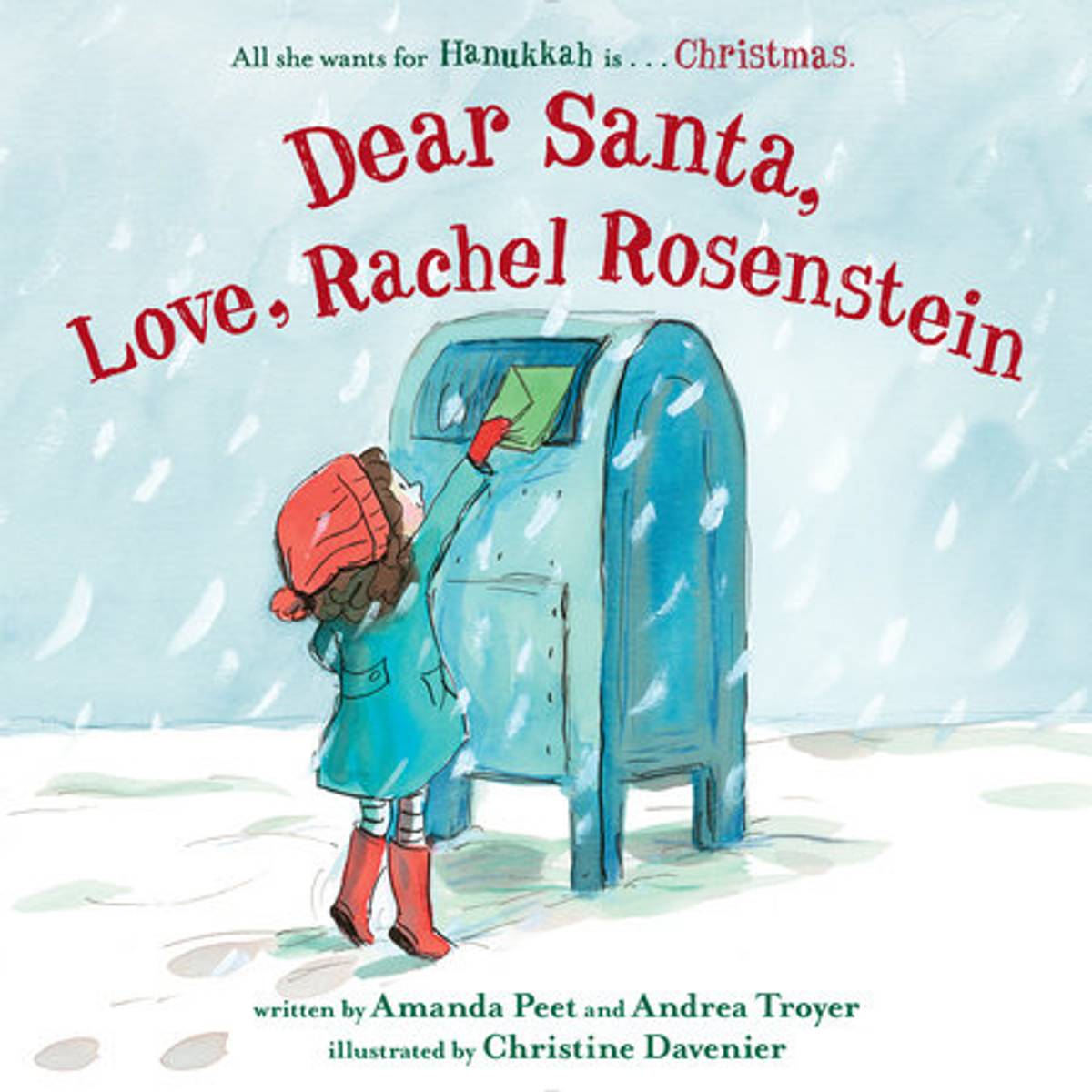
And now, a controversial pick. (Would you expect any less?) Dear Santa, Love Rachel Rosenstein, by Amanda Peet and Andrea Troyer, with illustrations by Christine Davenier, has gotten some venomous reviews. Not only is it a book by a (shudder) celebrity—an actress, even—but also it basically concludes that Christmas is better than Hanukkah. HERESY. BURN HER. No, don’t; I think it’s great. We understand why this young girl desperately wants Santa to come to her house: We see a spread of gorgeously lit up homes festooned with strings of colored lights; we know other kids get to sit on Santa’s lap at the mall; we’re familiar with the way Christmas reminds us we’re Other. Christmas makes Rachel feel “like a kid in a candy store without a mouth.” She writes to the titular fat man, begging him to drop by: “I know that you are a fair person and will not mind that I am Jewish. After all so was Jesus, at least on his mother’s side.” When her family goes for Chinese food, she sees some of her classmates there: The ones who celebrate Chinese New Year and Diwali … and that’s nice. But not feeling excluded would be nice too. And you know what? Rachel is right. Hanukkah is not as important a holiday as Christmas. I do not approve of Hanukkah bushes and mensches on benches. This is a teachable moment, people. (Bonus: The authors donated a portion of their advance to Seeds of Peace, a nonprofit peace-building program for Israeli Jewish, Palestinian, and Egyptian teenagers.) (Age 5-9.)
From a celebrity book with a big PR push to a tiny-press-published but just-as-delightful tale: Family Ties, by Shoshana Banana (the cutesy pseudonym is wince-inducing, but don’t hold that against the book) is weird and wonderful. The nameless narrator’s dad has a vast collection of neckties, all gifts from Jewish family members all around the world. This book offers no pictures of people, only oversized text and giant photos of various “family ties.” My fave is a brown hipster number covered in little mod bubbles in pea green, orange, and white, along with little treyf sea creatures.
Dad got this tie as a birthday present
from Cousin Pierre in Paris,
who speaks French and takes photographs for fashion magazines.
(The shrimp, or crevettes,
are not kosher to eat,
but are definitely kosher to wear.)
(FYI, I Googled. Those aren’t shrimp. They’re prawns, because prawns have an additional abdominal segment. I realize I am intolerable.)
Banana, whose actual name is Hillary Bennahum, is a vintage-clothing seller in real life. And the ties look luscious. My kids used to love playing with scraps of fabric; this book scratches the same itch. The final image is a heart-shaped cutout from a needlepoint sampler that says “mishpacha” on it in Hebrew—family. Banana, a parent at a Solomon Schechter School in Queens, has said that the diversity of her kids’ school was an influence on the book. “We are lucky enough to have speakers of Russian, Bukharan, Farsi, Spanish, Portuguese, and … the diversity we enjoy is at odds with a perception some may have of ‘the Jews’ as a monolithic block, a homogeneous group,” she told a Schechter newsletter. That heterogeneity fuels this delightful photo book. (Age 3-8.)
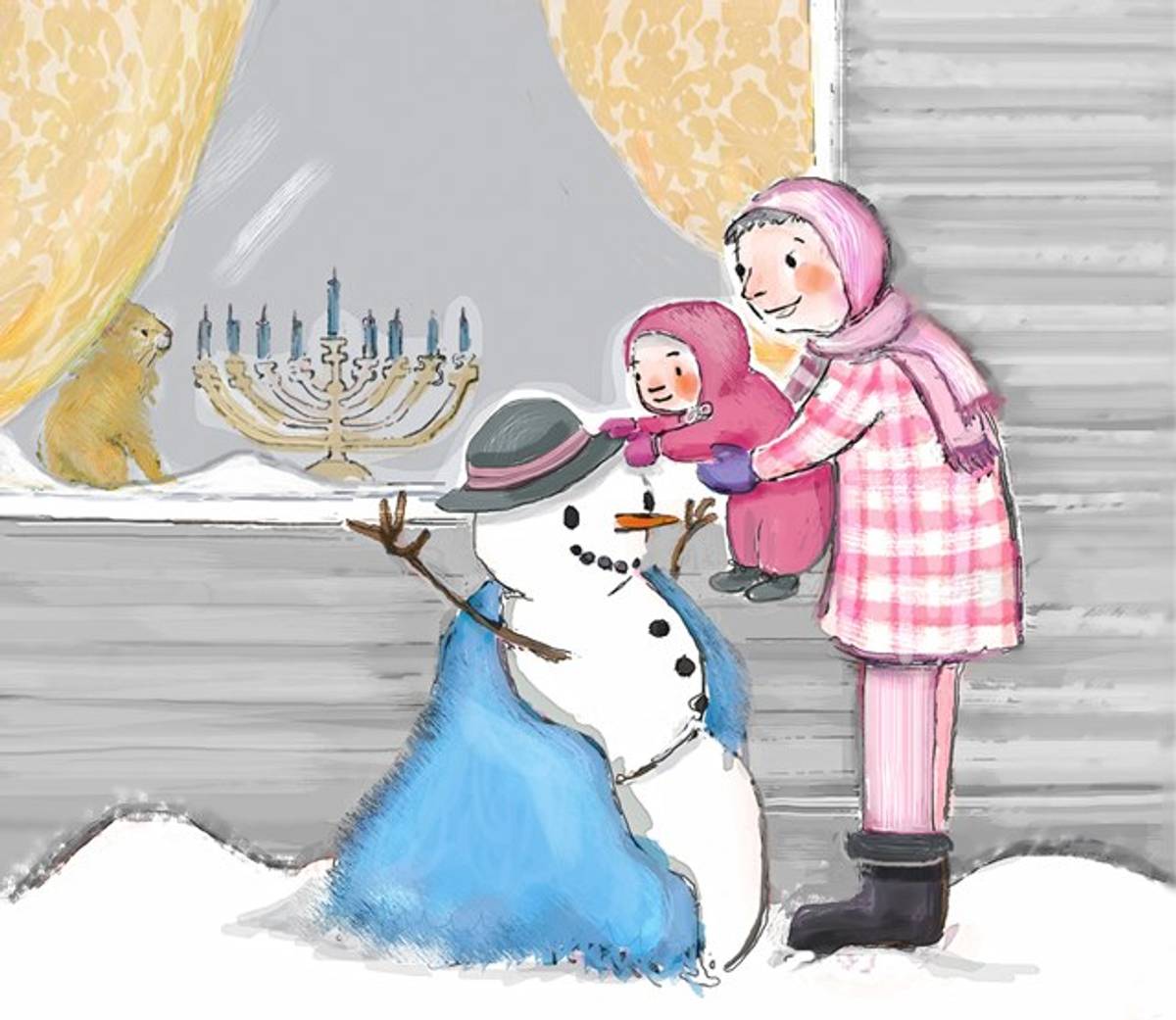
Sadie and Ori and the Blue Blanket, by Jamie Korngold, illustrated by Julie Fortenberry, maybe isn’t the happiest Hanukkah gift, but it’s a book any child with living grandparents should have. When Sadie is born, her grandmother knits her a “soft blue blanket the color of the sky.” We see Grandma with a swaddled little Sadie, cuddled in an oak rocking chair; Grandma has hipster hair and wears cute ballet flats and looks like an actual modern Bubbe. In time, Sadie’s little brother Ori arrives, and the blue blanket becomes a tent, a picnic standby, a floor for the grand cities Grandma helps the kids build from wooden blocks. But time passes, as measured out from Seder to Seder, and Grandma starts slowing down. She’s no longer adventurous. She has little energy. Eventually, she can’t even read to the kids. But they can still be close. At the end of the book, Sadie and Ori are both nestled beside Grandma in that oak rocking chair, reading one of their picture books to her. I’M NOT CRYING, YOU’RE CRYING. (Age 3-7.)
CHAPTER BOOKS
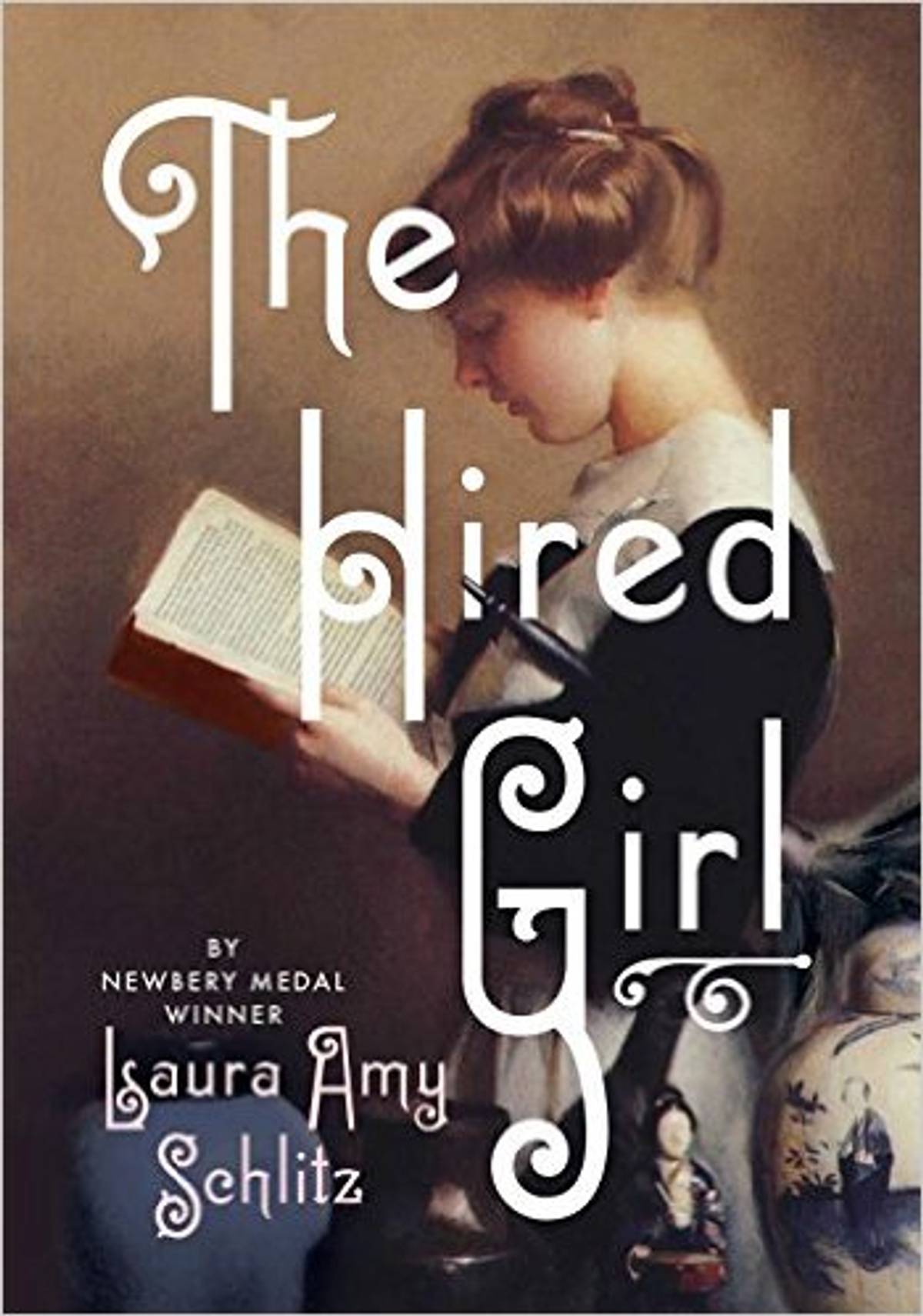
My favorite novel on this list is The Hired Girl, by Newbery Medal-winner Laura Amy Schlitz. It’s a truly literary gem that’s also hysterically funny. It’s 1911, and 14-year-old dirt-poor farm girl Joan Skraggs desperately wants to better herself. She loves books, and her beloved teacher has given her a diary in which she hopes to write “with TRUTH and REFINEMENT.” Unfortunately, her life with an abusive father doesn’t much lend itself to elegance. “When most people laugh, it’s like water splashing over the lip of a pitcher,” she writes. “The thing happens easily, and it wants to go on. Father’s laugh was like coughing up something from the back of his throat.” (Whenever Joan tries to write with refinement, the result is terrible. “The stage of my life is shrouded by curtains of Stygian darkness. But lo! For a brief moment, a crooked thread of lighting defied the gloom.” Oy.) After her father burns her beloved novels, she runs away to Baltimore and finds work as a hired girl for the Rosenbach family. Schlitz (a non-Jew) totally nails the pretensions of some German Jews of the era: the inconsistent practices of kashrut, the scorn for Eastern European Jews, the materialism. Joan, who renames herself Janet Lovelace (glamorous-sounding!) and claims to be 18, struggles with her own prejudices, her desire to convert the Rosenbachs to Catholicism, her growing feelings for the cute, callow, and callous David Rosenbach. She wants to be pure, like her idol Jane Eyre, but after David kisses her (inappropriately!), she’s swept away. She tells her diary:
I wonder about the whole history of the world. Governments and courtrooms and steam engines and combines—all necessary inventions, but how did men come up with them, when they could have been kissing? I think about the conquistadors and how they left off kissing their wives and went sailing across the ocean to conquer a lot of innocent natives who would probably have preferred to stay in their hammocks and kiss their wives. It’s hard to fathom.
It is. I’m not exactly sure who the audience for The Hired Girl is—it’s very long and full of literary references, and Joan is about as unreliable as a narrator gets. Some adults have taken offense at her insensitive comments about American Indians, Jews, and African-Americans. (And she insults the Irish, too!) But I think any reader who’d choose this book would understand the difference between a character and the author, and Joan is clearly someone who learns, a soul whose intentions are good, and a product of her time and circumstances. The book’s masterful, and I’m sorry for people who want to censor it. (Age 12-adult.)
I’m always grumping about how hard it is to find good little-kid chapter books. So, hooray for Lola Levine Is Not Mean, by Monica Brown, illustrated by Angela Dominguez. It’s fun and has a strong voice, a real trick for a novel aimed at readers so young. Lola, who has very passionate views (her favorite expression is “in my opinion”), loves soccer and has a fish named Mia Hamm. She tells us:
I like the word “shalom” because it means three things: “Hello,” “good-bye” and “peace.” My dad taught it to me. My dad is Jewish. My mom is Catholic. A boy at school said I was a half-and-half once. I disliked that very much. Mom and Dad tell me that I’m whole just the way I am, and I agree.
When her hyper-competitive nature leads to her accidentally hurting another kid during a soccer game, the other kids start calling her Mean Lola Levine. Luckily, she makes amends, and we learn about two cultures along the way. (Author Monica Brown has an American Jewish parent and a Peruvian Catholic parent, and this book is the first in a new series.) (Age 6-9.)
For slightly older readers, check out Judy Blume, by Kathleen Krull. Part of a biography series called “Women Who Broke the Rules” (all starting with the quotation, “Well-behaved women seldom make history”), Judy Blume is a great role model for kids who dream of becoming writers. Krull’s voice is breezy and funny, and the book is full of exciting facts: Judy was in a club in sixth grade with four friends called the Pre-Teen Kittens! Her father was one of six, and most of his siblings died when she was little, so she associated Jewishness with sitting shiva! She was terrified of dogs, swimming, and vomit! But we also learn about her discovery of feminism, her struggles to get published, her aim to write realistic books about fractured families and the real stresses kids faced. Back in 2009, Krull wrote a spectacular, nuanced biography of Albert Einstein I raved about, so it’s gratifying to see that she can write as readable a book about a non-jerk. Amusing, cartoonish spot illustrations add to the fun, and there’s a useful bibliography. (Age 6-11.)
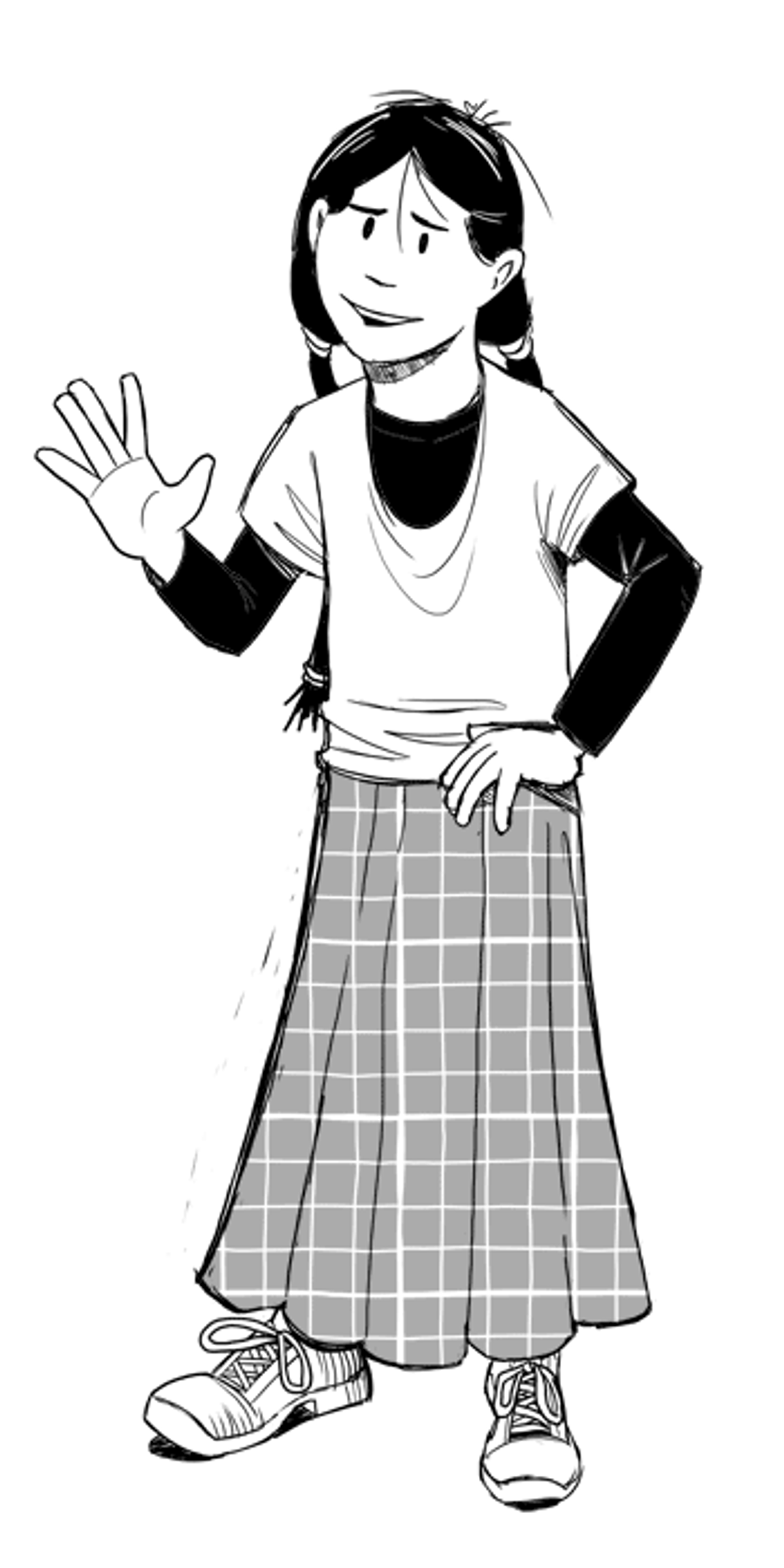
You know how goyim always go crazy for matzo and kreplach? Well, the Hereville series has just that kind of crossover appeal. The third installment, Hereville: How Mirka Caught a Fish, by Barry Deutsch, is yet another graphic novel for the ages. You need to have read the first two books to get the most out of this one, but that’s no hardship, because they’re incredible. A lot of current Jewish cartoonists are not great artists, and I try very hard to keep a pleasant expression on my face when people recommend their work. Deutsch, on the other hand, is a great cartoonist. His panels explode with kinetic energy, he knows how to use different panel sizes and shapes (and no outlines at all) to vary the pace and build suspense, and Mirka herself is a fabulous character: an adventurous, ultra-Orthodox, troll-fighting girl in a Monsey-like community, wearing a long skirt and a short-sleeved tee over a long-sleeved tee. This time, Mirka has use a magic hairband to defeat an evil wish-granting fish. (Go with it.) All three Mirka books deal with feelings of loss and rivalry, but this one has some truly scary illustrations (there’s a near-suffocation, a beloved human turns into a redwood, and Mirka proves herself to be the worst babysitter of all time), but if your kid can handle some big emotions and frightening visuals, the payoff is huge. And now I want a skirt like Mirka’s, with exclamation points and question marks all over it. (Age 8-12)
You’ve already heard me rave about Simon vs. the Homo-Sapiens Agenda, by Becky Albertalli. But to recap, this is a fluffy summer-sky cloud of a YA novel that will make a lot of different kinds of readers happy. You got your epistolary romance between two hilarious, articulate dudes (one Jewish, one not). You got growth and bravery and Oreos and friendship and Harry Potter references. There’s quiet wisdom, too. Simon observes, “It is definitely annoying that straight (and white, for that matter) is the default, and that the only people who have to think about their identity are the ones who don’t fit that mold. Straight people should have to come out, and the more awkward it is, the better.” Preach. (12+)
I’m always wary of verse novels. Hey, author, is there a reason for this story to be told in poetry? Do you write good poetry? Are you aware that most of us hate poetry? Audacity, by Melanie Crowder, is a worthy entry. It’s a retelling of the life of Clara Lemlich, the subject of last year’s wonderful picture book Brave Girl. Lemlich was a real-life labor leader and early feminist and a huge lover of Russian novels that her Yiddish-speaking Torah-scholar father didn’t want her to read. (Like Joan’s father, Clara’s father winds up burning her books.) A reader who desperately wants to learn English when the family emigrates to New York, Clara makes sense as a character who’d tell a story in verse.
One by one
the foreman
pats the workers down
searching for scraps of fabric or thread or dignity
that might find their way out
of the shop.
Audacity isn’t all bleak, though. There’s a bit of humor, lots of defiance, the yearning for a fabulous hat, and a sweet love story. (Joe! The perfect, supportive boyfriend!) But the steely core here is Clara’s determination to better the lives of the garment workers. The afterword discusses a few liberties the author took with facts, and there’s a nice interview with Clara’s daughter, daughter-in-law, and grandchildren. (Age 12 to adult.)
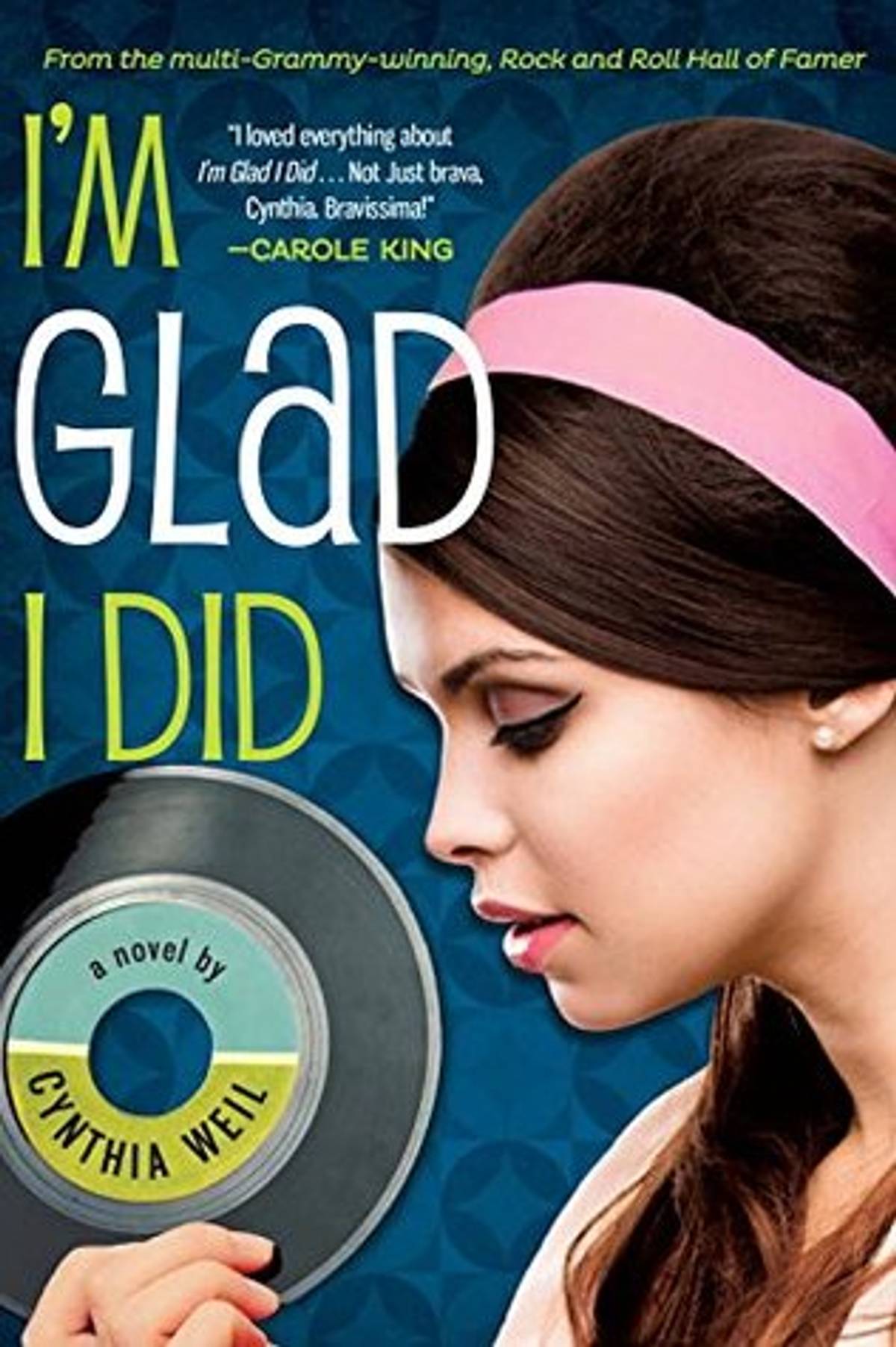
Finally, I’m Glad I Did, by Cynthia Weil, has an enticing cover (a teenage girl done up in early ’60s glam, holding a 45 record—why do so many Jewy YA novels have such ugly, unimaginative covers?) and an overstuffed plot: There’s a love story, a payola scandal, a murder mystery, a look at race relations, and a lot of music. The publisher describes I’m Glad I Did as “YA Mad Men,” and OK, sure, why not. It’s the summer of 1963, and 16-year-old JJ Greene wants to buck her Jewish family’s insistence on raising lawyers. Her parents let her take a summer gig at the famous Brill Building, but they’ll only let her stay in the biz if she can write a hit song by September. Weil is the legendary co-writer of “You’ve Lost That Lovin’ Feeling,” “Blame It on the Bossa Nova,” and “We Got To Get Out of This Place,” among other hits, and I bet a lot of teenage girls would love to follow in her footsteps. (Age 12-16.)
The upshot: When you’re shopping for gifts, remember: Chocolate doesn’t last. Books do. You know what to do.
***
Like this article? Sign up for our Daily Digest to get Tablet Magazine’s new content in your inbox each morning.
Marjorie Ingall is a former columnist for Tablet, the author of Mamaleh Knows Best, and a frequent contributor to the New York Times Book Review.